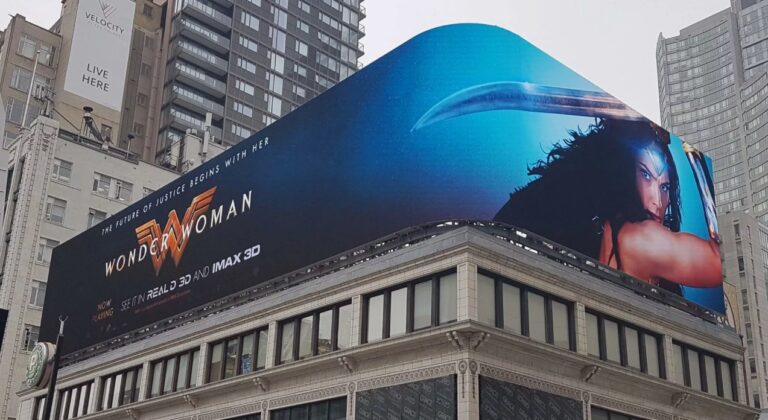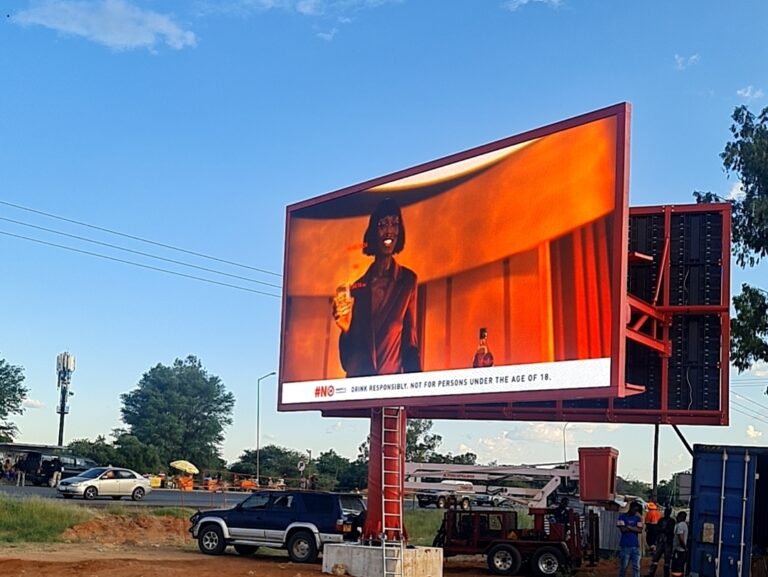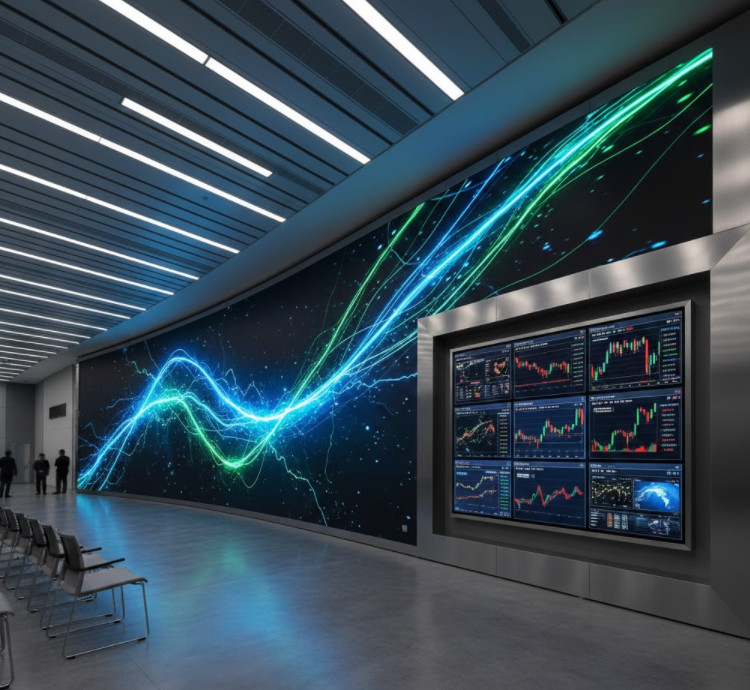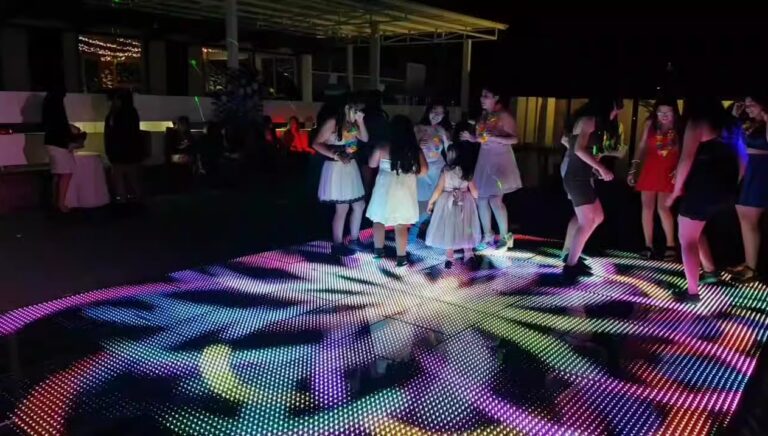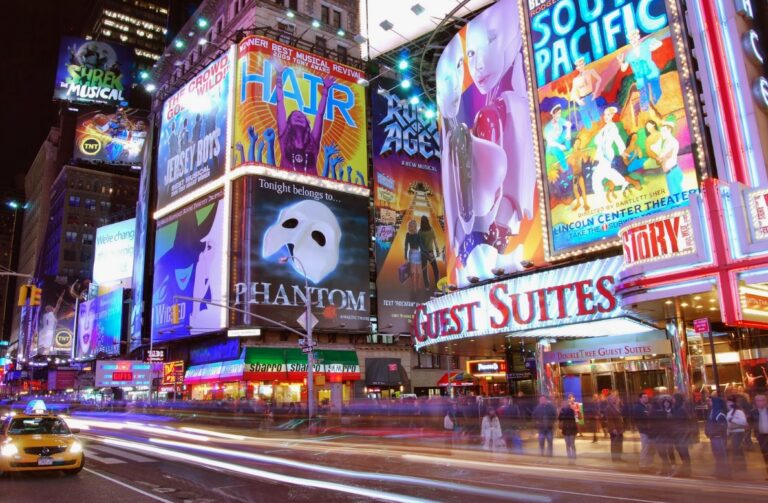Table of Contents
-
The Evolution and Innovation of LED Display Technology
-
A Brief History of LED Display Development
-
Technical Principles and Structural Differences
-
Appearance and Transparency Comparison
-
Display Effect and Visual Experience Comparison
-
Installation and Maintenance Differences
-
Application Fields and Scenario Comparison
-
Cost and Cost-Effectiveness Analysis
-
Cost-Effectiveness Evaluation in Different Application Scenarios
-
Conclusion: Choose LED Transparent Screen or Traditional LED Screen?
-
Future Technological Trends
-
Final Thoughts: Finding the Balance Between Technical Possibility and Business Reality
In the rapidly evolving field of display technology, LED displays have undoubtedly become one of the brightest stars. From the early days of large outdoor billboards to today’s ubiquitous indoor display terminals, LED screens have transformed our information delivery and visual experience with their high brightness, long lifespan, and vivid colors.
However, technological progress never stands still. In recent years, a new type of display technology called the “LED transparent screen” has quietly emerged, showcasing its unique appeal across various fields. So, what exactly differentiates this “transparent” LED screen from the traditional ones we are familiar with? This article offers an in-depth comparison of both technologies in terms of technical principles, appearance, display effects, installation and maintenance, application fields, and cost—helping you better understand and choose the most suitable LED display solution for your needs.
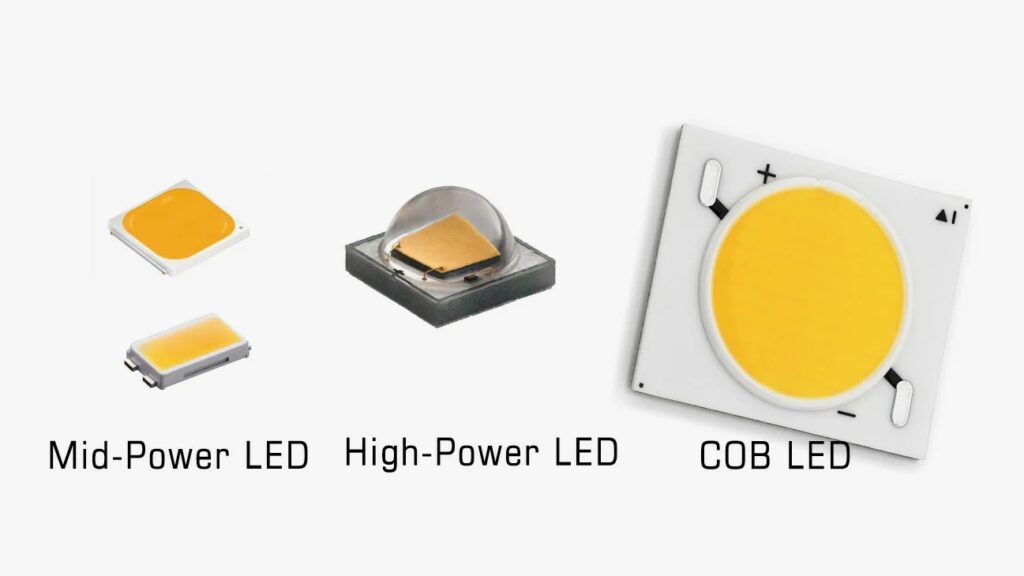
1. The Evolution and Innovation of LED Display Technology
The development of LED display screens can be traced back to the 1960s. Initially, LEDs were primarily used in simple applications such as indicator lights. As breakthroughs in LED chip technology improved light efficiency and brightness, and as driver circuits and control systems matured, LED displays evolved into larger, full-color, and high-definition formats. Let you learn about LED chips: technology, application and development.
2. A Brief History of LED Display Development
-
Early Stage (Monochrome/Bicolor): Mainly used for simple text and numeric displays.
-
Full-Color Era: With the maturity of red, green, and blue LEDs, full-color images and videos became possible.
-
HD Stage: Advances in small-pitch LED technology enabled finer image resolution, expanding into high-end indoor display areas.
-
Innovative Development: The emergence of flexible LED screens, irregular-shaped LED screens, and transparent LED screens has pushed the boundaries of LED display applications.
The birth of the transparent LED screen is a significant milestone in LED display innovation. By integrating LED beads into transparent substrates, it retains background transparency while displaying dynamic content—offering designers and users a brand-new visual and functional experience.
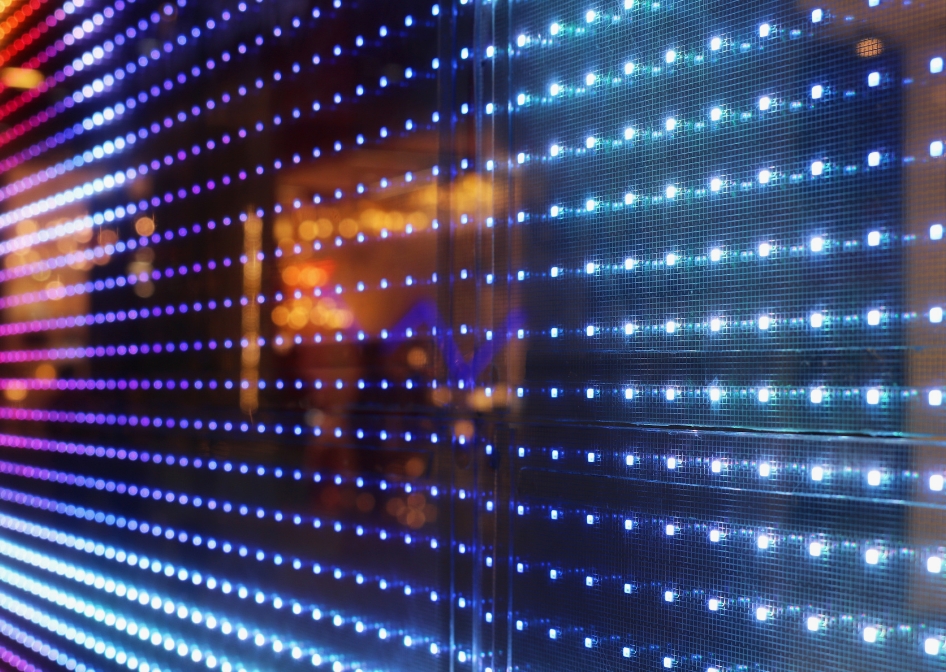
3. Technical Principles and Structural Differences
Understanding the core technical principles is key to distinguishing between the two types of screens.
A. Traditional LED Screen Technology
Traditional LED screens consist of densely arranged LED beads (SMD or DIP types) mounted onto printed circuit boards (PCBs). These beads form pixels controlled by driver chips, displaying images and videos. To protect the LEDs and internal circuitry, a black mask or special coating usually covers the screen’s surface, enhancing contrast and visibility. Due to this structure, traditional LED screens are inherently opaque. What is SMD? What is DIP?
B. LED Transparent Screen Technology
The core concept of LED transparent screens is “transparency.” Using specially designed LED strips, the LED beads are mounted onto ultra-thin transparent PCBs or flexible circuit boards. By minimizing strip width and spacing between LEDs, and optimizing driver ICs, structural obstruction to light is greatly reduced. The result is a screen that appears like a glowing pixelated glass panel.
Some high-end transparent LED screens utilize COB (Chip-on-Board) packaging technology, embedding LED chips directly into the transparent substrate—eliminating the conventional SMD casing, reducing pixel spacing, and significantly enhancing transparency and visual quality. Let you understand the 6 differences between SMD LED display and COB LED display.
Example: Imagine a regular glass curtain wall embedded with countless tiny LED beads that can emit colored light. When these LEDs are lit, they display dynamic images or videos. When turned off, the glass remains as transparent as ever. This is the essence of the transparent LED screen.
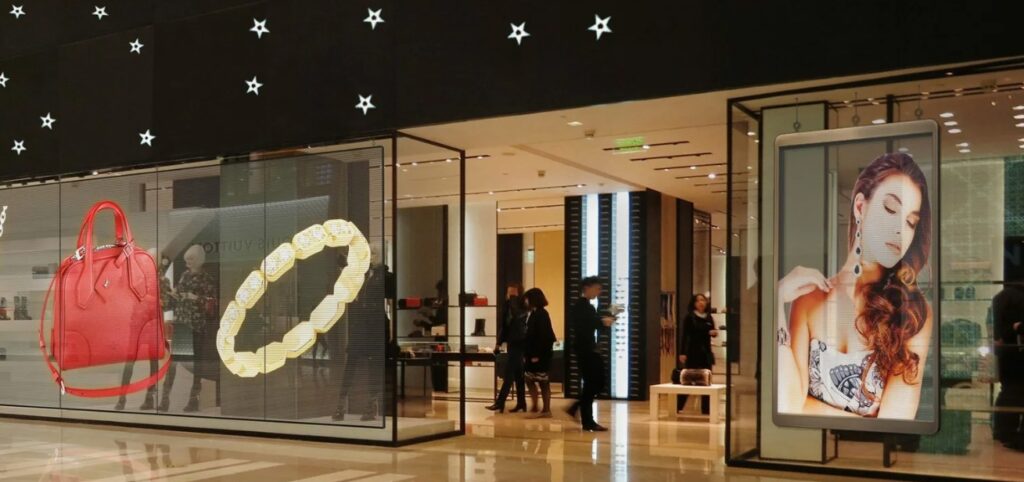
4. Appearance and Transparency Comparison
Appearance and transparency are the most immediately noticeable differences between traditional and transparent LED screens.
A. Traditional LED Screen Appearance
-
Opaque: Covered with a black mask or coating, completely blocks the view behind.
-
Visible Frames: Requires frames for structural support and protection.
-
Solid Appearance: Modular design that forms a complete flat display when assembled.
B. LED Transparent Screen Appearance
-
High Transparency: Objects behind the screen remain clearly visible. Transparency rates typically range between 60% and 95%.
-
Invisible Look: Thin LED strips and circuits are nearly invisible from a distance, blending seamlessly into the surroundings.
-
Lightweight and Sleek: Simplified structure, lightweight, and modern appearance.
-
Customizable: Can be tailored into various shapes and sizes.
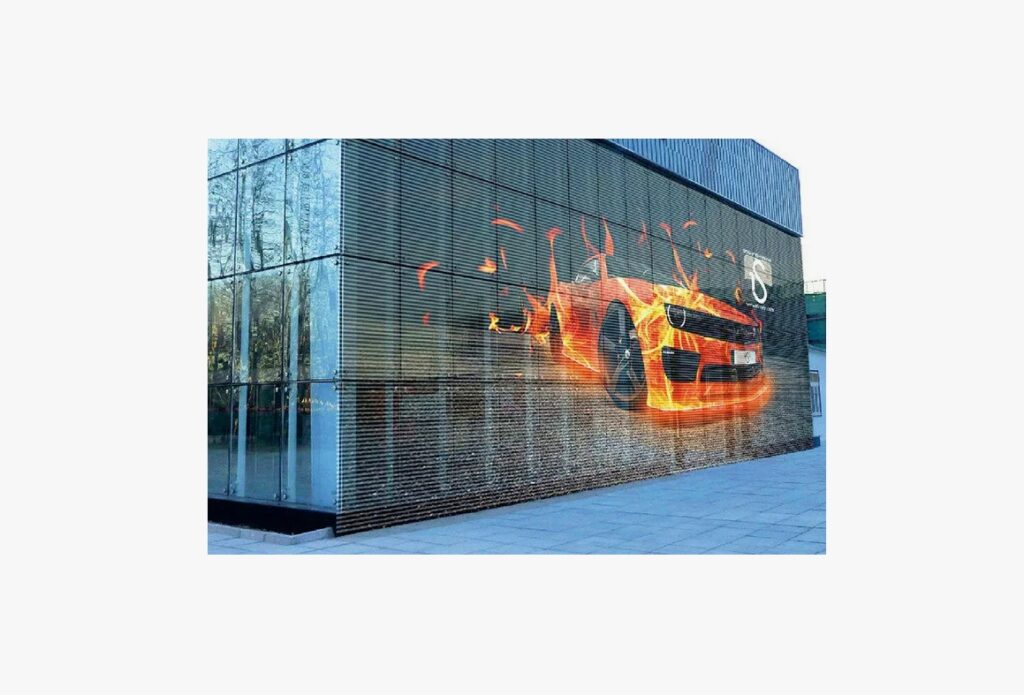
Example: A transparent LED screen installed on the glass window of a car dealership plays promotional videos of new vehicles, while customers can still clearly see the showroom and cars inside—creating an eye-catching display without blocking the view and enhancing the store’s image.
5. Display Effect and Visual Experience Comparison
Although both utilize LED display technology, the visual performance of transparent and traditional LED screens varies.
A. Traditional LED Screen Display Quality
-
High Brightness and Contrast: The black mask design helps absorb ambient light, providing vivid images even in bright environments.
-
Rich Color Saturation: Accurately restores color tones, delivering delicate and lifelike visuals.
-
Wide Viewing Angle: Most traditional LED screens support broad viewing angles.
B. LED Transparent Screen Display Quality
-
Floating Visual Effect: Content appears to float on the glass, adding a strong sense of modernity and visual impact.
-
Creative Display with Transparent Background: Integrates background scenery or design elements to produce unique effects.
-
Lower Brightness: To preserve transparency, LED density is reduced, resulting in lower brightness compared to traditional screens with similar pixel pitches.
-
Contrast Affected by Ambient Light: Bright backgrounds may reduce image contrast.
-
Angle Dependency: Viewing angles can be affected by LED strip arrangement.
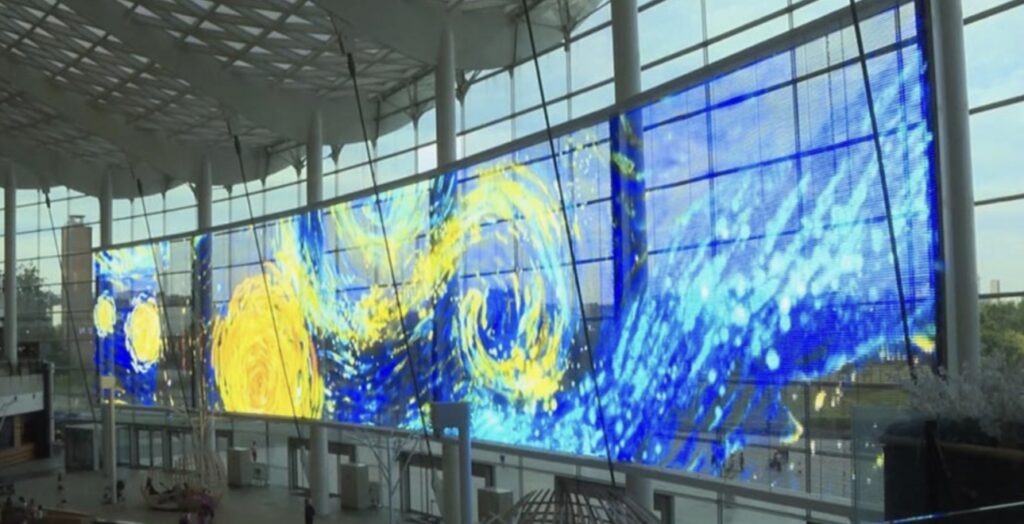
Example: A transparent LED screen installed on a museum glass partition displays flowing light patterns and abstract visuals, complementing the surrounding exhibits and creating a dreamy, immersive atmosphere for visitors.
6. Differences in Installation and Maintenance
The method of installation and ease of maintenance are also crucial factors when selecting an LED display screen.
A. Installation Methods and Considerations for Traditional LED Screens
-
Diverse Installation Options: Can be mounted on walls, suspended, placed on the ground, and more.
-
Relatively Complex Structure: Requires careful consideration of load-bearing capacity, wiring, and heat dissipation.
-
More Difficult Maintenance: Densely packed internal components make fault diagnosis and part replacement more complex, usually requiring professional technicians.
B. Installation Methods and Advantages of LED Transparent Screens
-
Easy Installation: Lightweight and simple in structure; can be directly installed on glass or framework using adhesive or suspension methods.
-
Minimal Impact on Building Structure: Does not require additional steel support structures, preserving the original appearance of the building.
-
Convenient Maintenance: Most transparent screens adopt modular designs, allowing individual light bars or modules to be replaced independently, reducing maintenance cost and complexity.
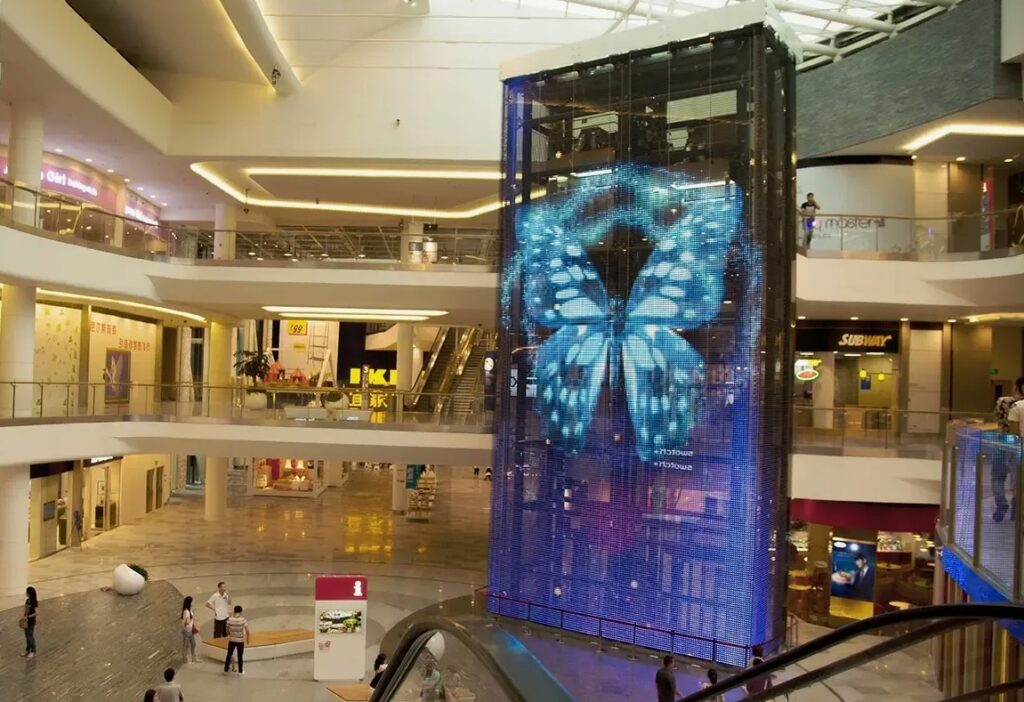
Case Study: An LED transparent screen was installed inside an elevator car of an office building to display floor information and advertisements. Thanks to its slim and lightweight design, the installation was simple and space-efficient, requiring no significant structural modifications.
7. Comparison of Application Fields and Scenarios
Both types of screens play significant roles in different application areas based on their unique characteristics.
A. Main Application Fields of Traditional LED Screens
-
Outdoor Advertising: Large billboards, building facades, etc.
-
Stage Performances: Background displays and visual effects.
-
Stadiums: Live sports broadcasting, information display.
-
Transportation Hubs: Information dissemination, flight/train information.
-
Command Centers: Surveillance display, data visualization.
-
Retail Stores: Window ads, promotional displays.
B. Unique Application Fields of LED Transparent Screens
-
Glass Curtain Walls: Media facades for commercial or landmark buildings to enhance the tech appeal and commercial value.
-
Retail Windows: Brand promotion and product display to attract attention and elevate store image.
-
Interior Decoration: Atriums, showrooms, museums, etc., for artistic ambiance and unique visual effects.
-
Stage Design: Creates a more futuristic and dreamlike stage atmosphere.
-
Exhibitions: Product launches, auto shows, and other interactive display solutions.
-
Elevator Cabins: For information dissemination and ad displays.
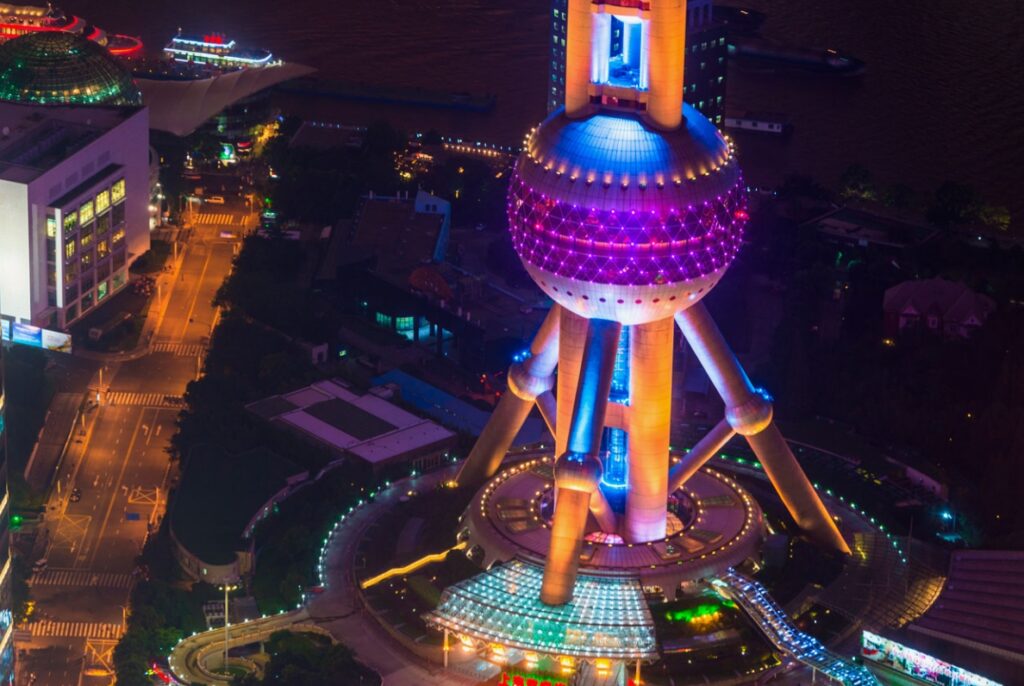
Case Study: At the observation deck of the Oriental Pearl Tower in Shanghai, LED transparent screens were installed on the glass viewing platform. While enjoying the scenery of both sides of the Huangpu River, tourists could also learn about the history and development of Shanghai, enhancing the sightseeing experience with information and entertainment.
8. Cost and Cost-Effectiveness Analysis
Cost is a key factor for users when choosing an LED display.
A. Cost Composition of Traditional LED Screens
The cost primarily includes LED lamps, driver ICs, power supplies, control systems, PCB boards, cabinet structures, wiring, and installation and after-sales services. Costs vary depending on pixel pitch, size, brand, and materials used.
B. Cost Composition of LED Transparent Screens
Similar in structure to traditional LED screens, but some components may be more expensive due to technical complexity:
-
Transparent Light Bars / PCB Boards: Higher technical requirements lead to higher costs.
-
Special LED Lamps / Chips: Smaller or specially packaged LEDs for transparency may increase costs.
-
Control System: Needs optimization tailored to transparent screens.
-
Structural Components: Simpler structures, but require high precision.
9. Cost-Effectiveness in Different Scenarios
When evaluating cost-effectiveness, it’s essential to consider more than just the price—factors such as usage scenario, expected performance, and maintenance costs are also important.
-
Traditional LED Screens: In scenarios that demand high brightness, high contrast, and stable all-weather performance (e.g., outdoor advertising, large stages), traditional LED screens are usually more cost-effective due to their maturity and controllable costs.
-
LED Transparent Screens: In environments where aesthetics, environmental integration, and visual uniqueness are priorities (e.g., retail windows, glass curtain walls, interior decoration), although the initial investment may be higher, the resulting advertising impact, enhanced brand image, and immersive experience make it a high-return investment in the long run. Here are the prices of LED transparent screens for your reference.
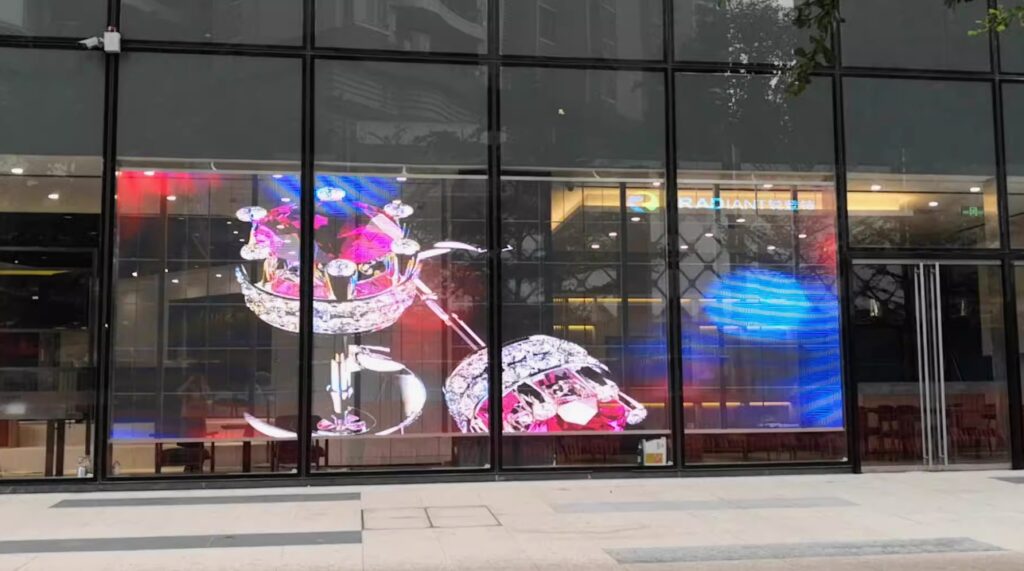
Case Study: A high-end fashion brand chose an LED transparent screen for its flagship store window display. Though more expensive than traditional posters or standard LED displays, the dynamic visuals and seamless integration with the store’s interior dramatically elevated the brand’s image and drew in more customers, resulting in increased sales and long-term cost-effectiveness.
10. Conclusion: LED Transparent Screen or Traditional LED Screen?
There is no absolute best display—only the one that best fits your needs.
A. Summary of Advantages and Disadvantages
| Feature | Traditional LED Screen | LED Transparent Screen |
|---|---|---|
| Transparency | Opaque | High transparency (60%-95%) |
| Brightness | Generally higher | Relatively lower |
| Contrast | High | Affected by background |
| Visual Performance | Vivid colors, fine details | Floating effect, blends with background |
| Aesthetics | Unified look, visible borders | Sleek, minimal, nearly invisible design |
| Installation | Diverse methods, more structural work | Easy, minimal impact on building structure |
| Maintenance | Relatively complex | Easier due to modular design |
| Applications | Outdoor ads, stages, stadiums, transport hubs, etc. | Glass walls, retail windows, interiors, exhibitions |
| Cost | Mature tech, cost is relatively stable | Higher component costs, larger initial investment |
B. Recommendations Based on Application Needs
-
If your project requires high brightness, high contrast, and long-distance outdoor visibility without the need for transparency, a traditional LED screen is a mature and cost-effective solution.
-
If you need the display to blend into the surroundings, provide a visually striking effect, and maintain transparency—such as for retail windows, curtain walls, or interior decor—then an LED transparent screen is the more innovative and appealing option.
11. Future Technology Trends
LED display technology is evolving in several directions:
Transparent Screen Evolution:
-
Higher transparency (>90%) and brightness (>8000 nits) balance.
-
Adjustable transparency tech (EC/PDLC with LED integration).
-
Flexible transparent screens for curved architecture.
Traditional Screen Innovations:
-
Micro LED for ultra-fine pixel pitch.
-
Enhanced modularity for easier installation.
-
Power efficiency improvements (30%+ energy savings).
Common Developments:
-
Unified smart management platforms for all screen types.
-
5G + 8K ecosystem and cloud-based content creation.
-
Eco-friendly materials with 95%+ recyclability.
Industry Outlook: According to DSCC, by 2027 the transparent display market will reach $15 billion, with LED technology accounting for 60% of that share—becoming the mainstream choice in architectural media and commercial displays.

12. Final Thoughts: Balancing Technology Possibilities with Business Realities
LED transparent screens and traditional LED screens are not replacements for each other, but rather parallel technologies for different needs. Choosing the right screen depends on multiple dimensions:
-
Space Value Assessment: Is the preserved transparency worth the price difference?
-
Content Requirements: Do you need immersive, sealed-off visuals or open, ambient blending?
-
Building Constraints: Can your structure support the weight and power needs of traditional screens?
-
Return on Investment: Can the premium cost of a transparent screen be justified through branding and visibility gains?
-
Future Expandability: Do you need room for future upgrades and feature expansion?
In conclusion, LED transparent screens have injected new vitality into the LED display industry. Their unique transparency brings significant advantages in specific scenarios. Understanding the characteristics of both screen types and aligning them with your actual needs and budget is the key to making the smartest choice.
We hope this article has helped clarify the differences between traditional and transparent LED screens. If you have any further questions, feel free to ask.

